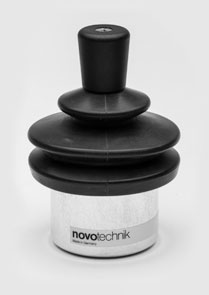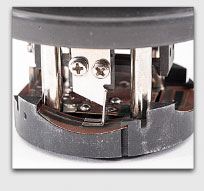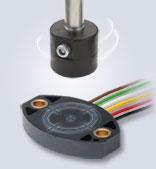|
Joysticks, Dirt and Water
 Engineers designing moving vehicles, from construction equipment to boats, have chosen to incorporate joysticks to enhance performance and safety. Some companies, like Caterpillar, even cover both markets. Engineers designing moving vehicles, from construction equipment to boats, have chosen to incorporate joysticks to enhance performance and safety. Some companies, like Caterpillar, even cover both markets.
Motor graders are thought to be the hardest of all types of construction equipment to control. Replacing all controls including steering with joysticks lets operators focus on getting a job done rather than nuancing complex controls.
 On boats, joystick and pod systems integrate a boat’s engines, thrusters, transmissions and propellers into a single source of control. This makes operations like docking large boats or maneuvering in tight spaces easier and safer. On boats, joystick and pod systems integrate a boat’s engines, thrusters, transmissions and propellers into a single source of control. This makes operations like docking large boats or maneuvering in tight spaces easier and safer.
Inside a ratiometric joystick there are typically two guide tracks attached to the control stick. These tracks are perpendicular to each other and move in one axis each. Combined they allow the 360° motion of the stick while measuring its position along the x and y axis via two rotary position sensors – one attached to each plate. Depending on the joystick device, the plates can have mechanically built-in friction resistance to allow leaving the stick in the position the operator placed it upon release of the stick.
Other joysticks have miniature motors attached to the plates to provide fractional force feedback from the engine or motor the joystick is operating. This is to give the operator a realistic sense of reactive force from the engine or motor in response to their movement of the stick. Microprocessor-based electronics are incorporated into a Central Control Unit convert the joystick angle sensors outputs to the right amount of rotation of an outboard engine – for example. More position sensors and conditioning electronics provide position feedback from the outboard engine (using the same example) to the Central Control Unit, that in turn sends a signal to the joystick motors as to how much force to apply.
|







 Engineers designing moving vehicles, from construction equipment to boats, have chosen to incorporate joysticks to enhance performance and safety. Some companies, like Caterpillar, even cover both markets.
Engineers designing moving vehicles, from construction equipment to boats, have chosen to incorporate joysticks to enhance performance and safety. Some companies, like Caterpillar, even cover both markets. On boats, joystick and pod systems integrate a boat’s engines, thrusters, transmissions and propellers into a single source of control. This makes operations like docking large boats or maneuvering in tight spaces easier and safer.
On boats, joystick and pod systems integrate a boat’s engines, thrusters, transmissions and propellers into a single source of control. This makes operations like docking large boats or maneuvering in tight spaces easier and safer.